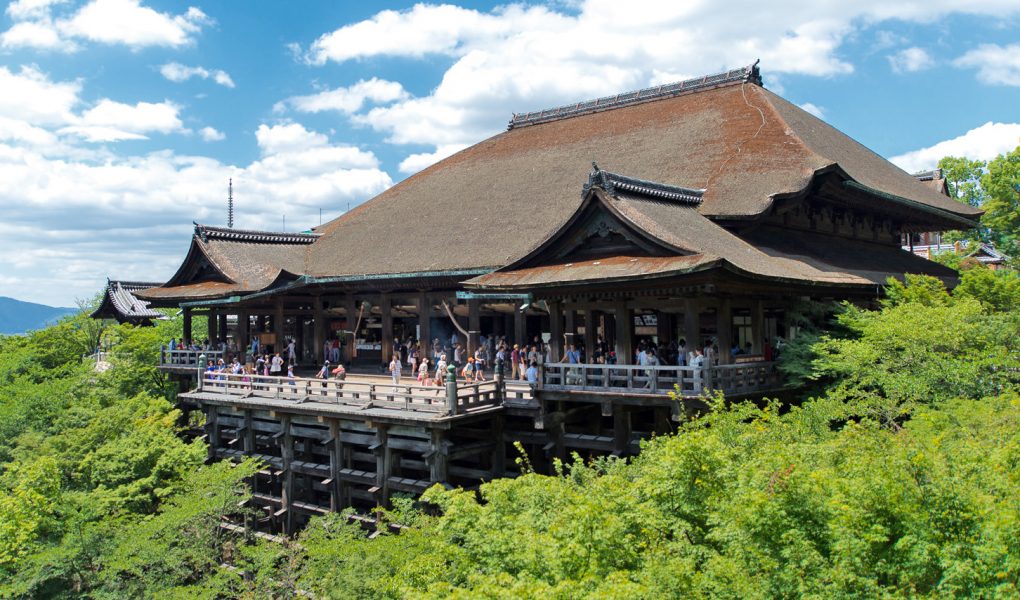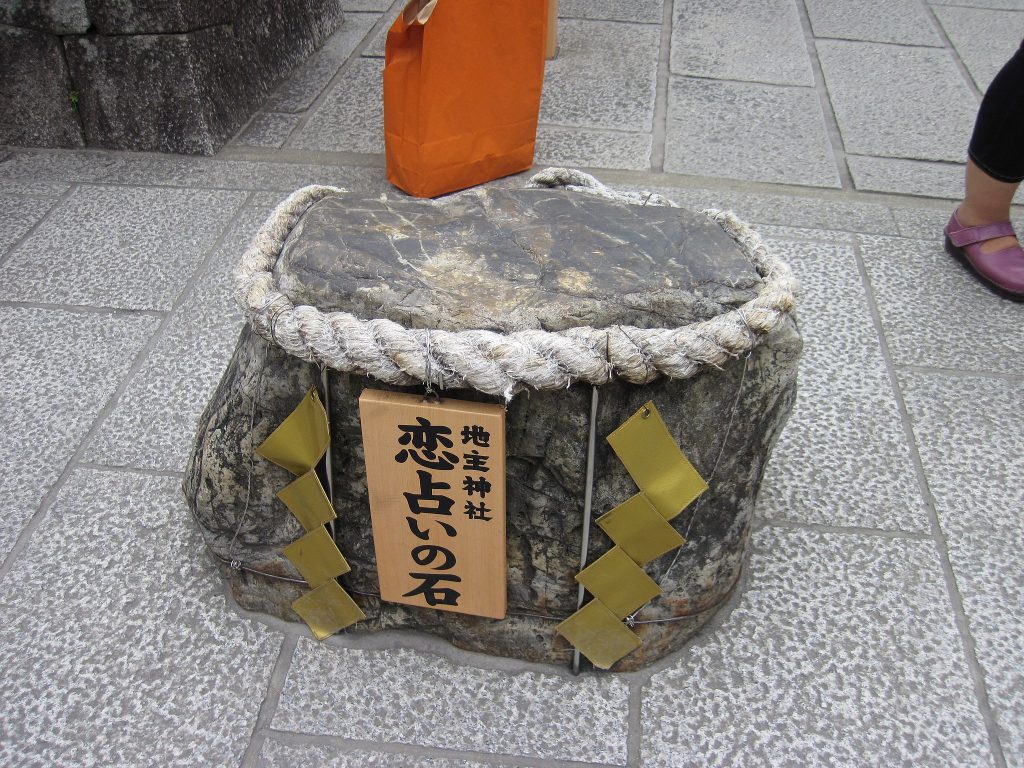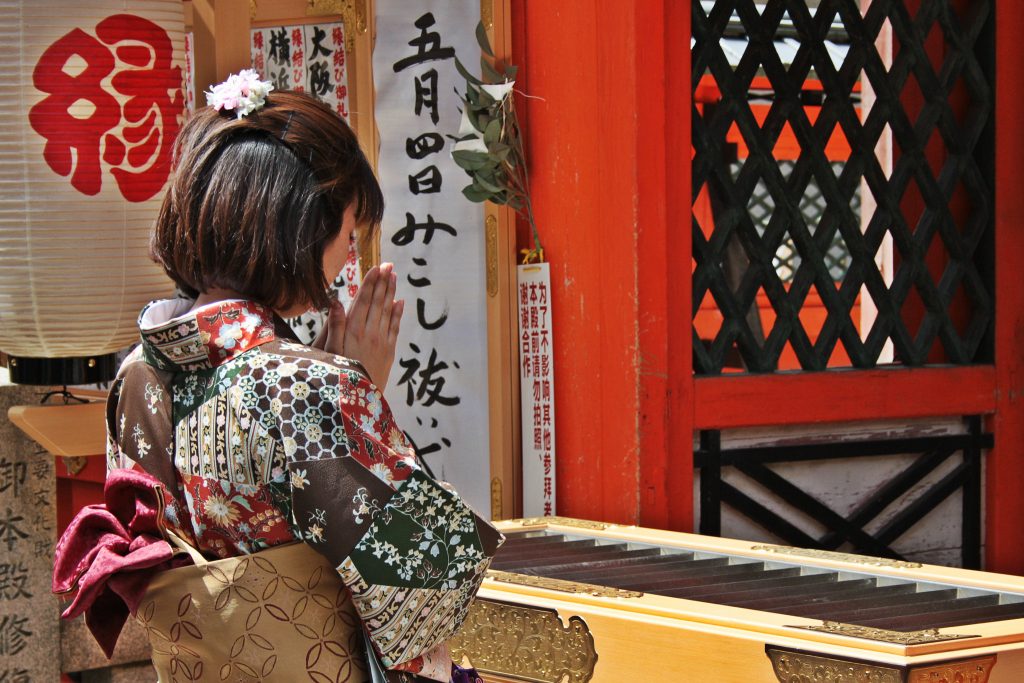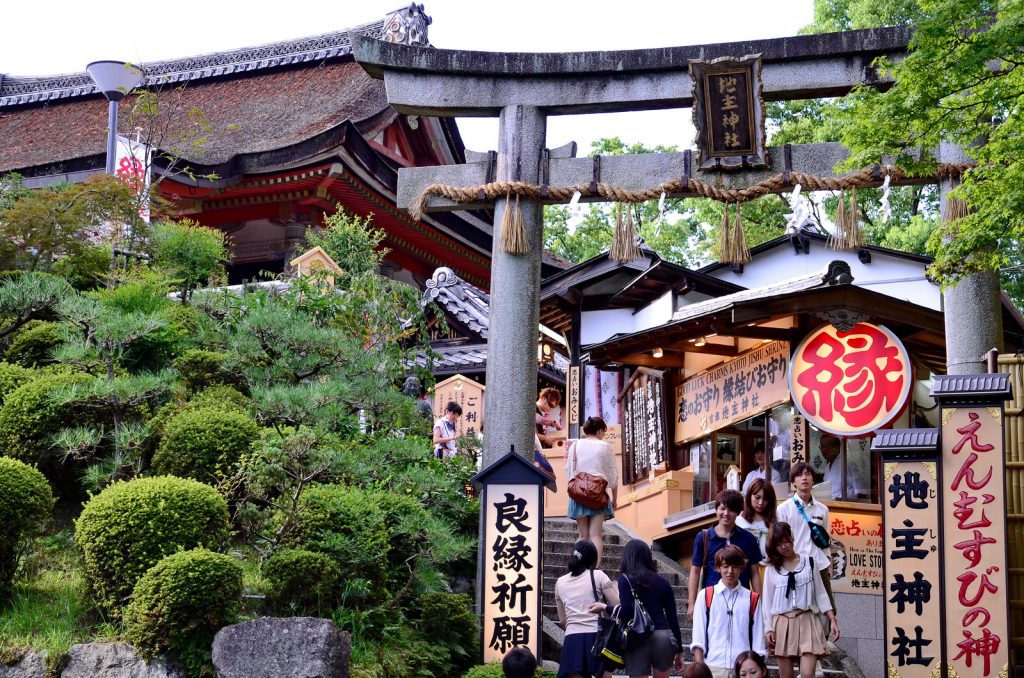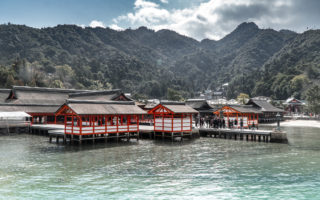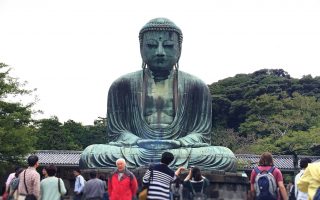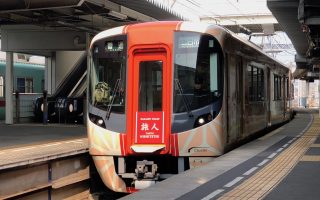Kiyomizudera temple is located on a hill side on the eastern side of Kyoto. This Buddhist temple, which was founded in 778, is well known for it’s waterfall and unique terrace which sticks out over the hill side.
Kiyomizudera Main Hall
Just a 10 minute walk south of the famous Gion District are the well-preserved historic streets of the Kiyomizu area. These streets lead up to Kiyomizudera temple. Like many other popular temple and shrine areas in Japan (for example Senso-ji, and Dazaifu), the streets leading up to the temple are lined with stalls selling all sorts of local goods and foods. The shop-lined Matsubara-dori street will eventually lead you straight to the impressive Nio-mon gate through which you can enter the temple area.
The temple grounds contain many interesting facilities. The temples main draw however is the huge terrace which extends from the Hondo (main hall). The terrace, which sticks out over the edge of the hill, is supported by a number of large wooden pillars and is constructed entirely without the use of nails. While the construction is beautiful and unique, it of course can’t be seen while on the terrace. However, the view offered over Kyoto from there, is absolutely stunning and well worth the ¥400 entry fee. Especially during fall, when all the trees below turn red and yellow, Kiyomizudera turns into Kyotos prime foliage viewing spot.
Book exclusive insider tour of Kiyomizudera Book Gion and Kiyomizu half-day walking tour
You can expect massive crowds at the terrace. If you seek some tranquility and peace, then go explore the surrounding area (inside and outside of the temple grounds). The walking paths and all the other attractions in the area are much less visited, and might even be a better experience than the terrace itself.
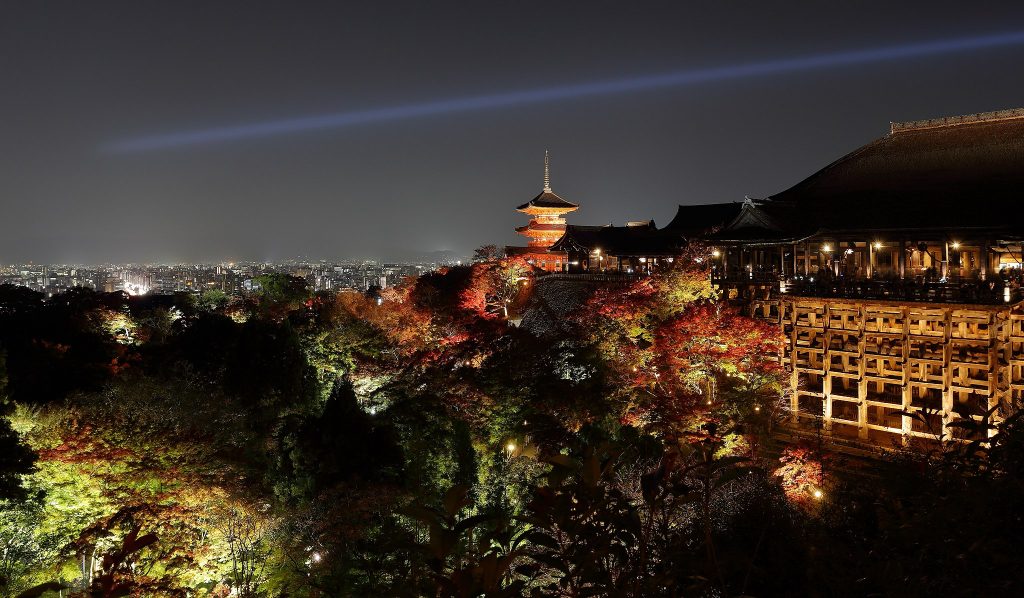
Credit: Martin Falbisoner. Licensed under CC.
Otowa Waterfall
The official name of Kiyomizudera is Otowa-san Kiyomizu-dera, named after the Otowa mountain and the waterfall which can be found by the main hall. The water from the fall is separated into three different streams, from which visitors can drink. The three streams represent respectively longetivity, luck in studies and luck in love. Visitors are encouraged to use the cups mounted on long sticks to drink from the stream they feel they need. However, one should evaluate which benefit is most desired, as it is considered very greedy to drink from all three.
immediately above the Otowa waterfall is the Okuno-in hall. This hall also has a stilted terrace, though much smaller than the terrace of the main hall. Okuno-in is so placed, that one can observe the impressive structure supporting the main halls terrace. This makes it a great photo spot.
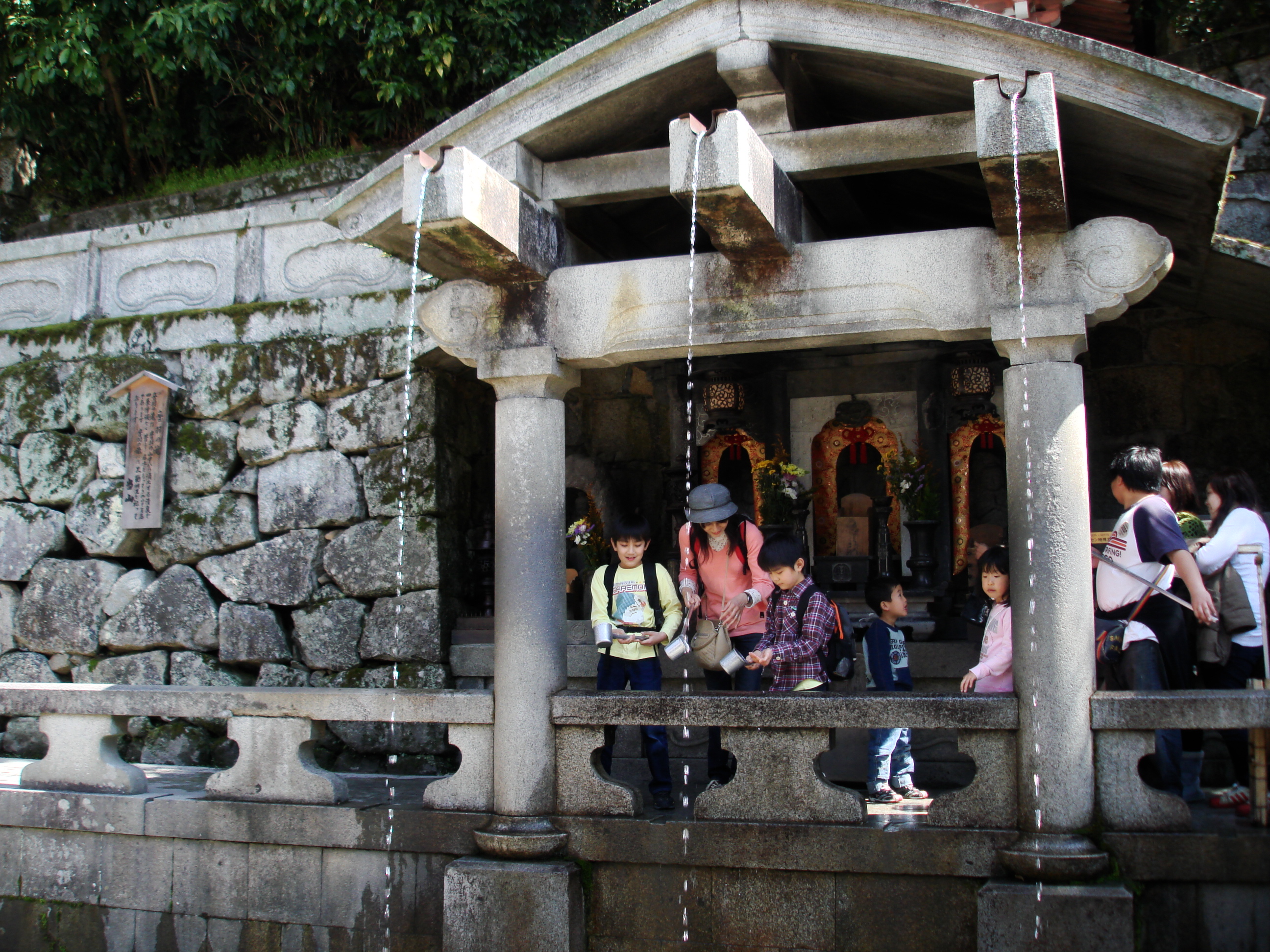
Credit: Travis Rigel Lukas Hornung. Licensed under CC.
Jishu Shrine
Near the main hall is Jishu shrine which is strongly associated with love. In Jishu shrine, Ōkuninushi-no-mikoto his parents and grand-parents are enshrined. Ōkuninushi-no-mikoto is, amongst other things, worshiped as a god of love and match-making. This type of shrine naturally attracts many couples wishing for good luck in love and pregnancy matters, but also many singles who are still searching for their future partner.
Many small tokens to help in love and related matters can be purchased at the shrine shop. However, if you are really looking for love you should definitely have a go at the “Koiuranai no Ishi” love stones. These two stones are located in front of the shrine, with a distance of 18 meters between them. The lonely visitor looking for love should find way from one stone to the other with the eyes closed. If successful, one is granted luck in love. Getting another person to guide you is permitted. However if your require guidance to successfully find your way, it means that you will require a go-between to find true love in your life.
About a hundred meters south of Kiyomizudera and Jishu is the small Koyasu Pagoda, which is also associated with safe childbirth. It’s said that a pregnant mother who can reach this pagoda will have a safe birth.
Zuigu-do hall
About midway between the Nio-mon gate and Kiyomizudera main hall is the Zuigu-do hall. The hall enshrines Daizuigu Bodhisattva (the object of worship can’t be seen) and several buddhist and shinto gods of childbirth and match-making. What is unique about Zuigu-do hall is the “Tainai meguri“, a completely dark hall in the basement of the building. After paying the entrance fee, one can walk the dark room and try to locate the stone in the center. It is a fun experience, which symbolizes some important aspects of Buddhism. Be careful not to bump into others when exploring.
Walking route
If you want to escape the crowds a bit, then there is an excellent walking route which takes you around the area and all the significant structures. Many visitors come only to see the terrace, so one can find more tranquility by moving around other parts of the temple grounds.
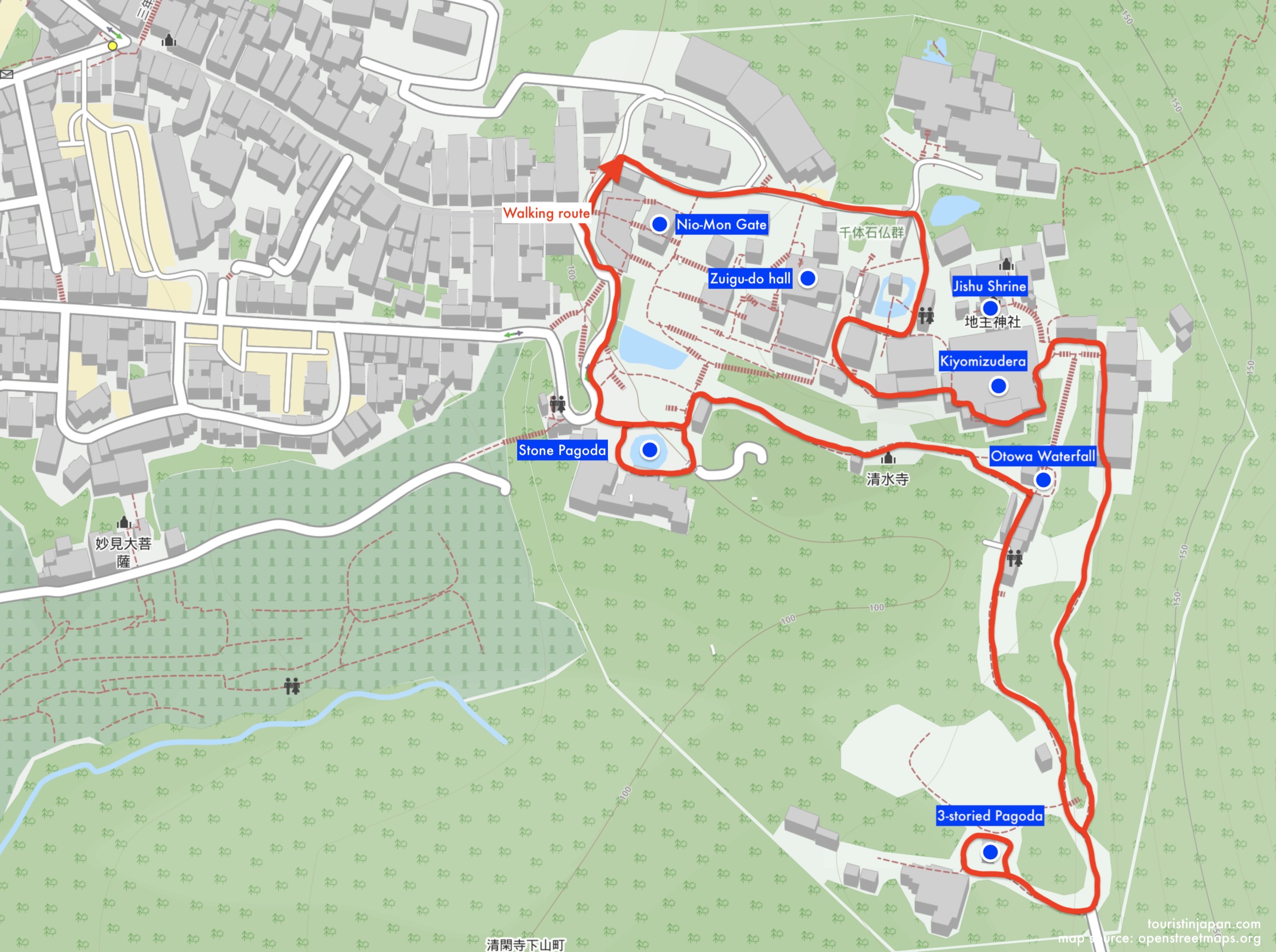
History and Legend
Kiyomizudera temple dates back quite a while. The temple was first established in 778 by a Buddhist monk named Kenshin. Kenshin had received a message in a dream to “go north and find a crystal spring”. Prompted by this dream he headed north, and found a clear waterfall at mount Otowa by Kyoto. Near the fall he met an old guy, Gyoei-koji. Gyoei-koji gave Kenshin a sacred tree which was infused with the powers of the god Kannon. Kenshin was tasked to shape the tree into a statue of Kannon to protect this sacred spot. The old guy soon disappeared, and Kenshin realized that it had been an incarnation of the god. He later decided to watch over the old guys abandoned hut, and took it on him to keep the sacred area peaceful.
A couple of years later Kenshin encountered a young warrior by the name
Sakanoue no Tamuramaro, who was hunting in the area. Kenshin told him off for killing living beings on Kannons sacred ground. The monks reprimands, and explanation about Kannons deeds, made a huge impression on the young warrior who some time later returned to build a temple for Kannon by the waterfall. The temple was named Kiyomizu, meaning “pure water”. Tamuramaro later became one of the most wellknown shoguns of the Heian period.
The temple has suffered numerous fires over the centuries. Many of the buildings seen today were constructed in 1633 on order of Tokugawa Iemitsu.
Getting there
Pro tip: Traveling around Kansai? Maybe the Kansai Thru Pass is something for you. The pass is valid for busses, subways and private railways – but not for JR trains.
By bus: from Kyoto Station, catch bus number 206 (direction Kitaoji) or 100 (direction Ginkaku-ji). Get off the bus at Gojozaka Bus Stop. From there it’s a 15 minute walk to Kiyomizudera temple. On saturdays and public holidays, take bus 18 (direction Ohara).
Cover photo credit: Jordy Meow. Licensed under CC.

